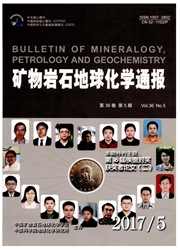

 中文摘要:
中文摘要:
应用正交实验设计理论,在粉煤灰中添加助熔剂(Na2CO3)。在800~900℃的高温下熔融,然后与NaOH溶液混合进行火法改性。多种实验方式对比得知,火法改性粉煤灰是废水中重金属最好的吸附剂。火法改性后粉煤灰处理废水的最优改性产品配比为:原状粉煤灰与Na2CO3的比例为1:2;所用NaOH的浓度为1mol/L;烘干温度为100℃。改性前后的扫描电镜照片及X射线衍射图的对比分析结果表明,粉煤灰的吸附性孔道随温度升高而增多,温度达300℃时为最佳,其比表面积增大,同时产生新的矿物相(A型和Na—P型沸石),吸附能力提高。而温度高于300℃时。吸附孔道被烧得塌陷或堵死,因而降低了吸附率。
 英文摘要:
英文摘要:
The design theory of orthogonal experimental was applied to study the coal fly ash treat waste water. adding fusing agent (Na2CO3) into coal fly ash and melting at 800-900 ℃ temperature, then, mixing with NaOH solution. It can be concluded that the fire modified coal ash is the best sorbent for heavy metal in waste water from contrasting with several experiments. The best modified product ratio that coal fly ash to treat waste water is that the amount ratio of primary coal fly ash to Na2O3 is 1 - 2 and concentration of NaOH is 1 mol/L with drying temperature is 100 ℃. The fire modify method was used and using the modified coal fly ash to treat simulation waste water. It can be seen from the results from the scanning electron microscopy and X-ray diffraction of primary and modified coal fly ash that the adsorbing tunnel become more and more and specific area increased with temperature increased, at the same time, the new mineral phases (type A and type Na-P zeolite) were produced and increased the absorbing ability. However, when temperature above 300 ℃, the adsorbing tunnel became cave or block for burning, so adsorbing ratio decreased.
 同期刊论文项目
同期刊论文项目
 同项目期刊论文
同项目期刊论文
 期刊信息
期刊信息
